September 2, 2016 Auroras
Chippewa National Forest, Itasca County, MN
Solar wind conditions were looking good during the evening for an appearance of the auroras right at twilight. A high speed stream of solar wind had arrived, and Bz was south around -8 nT with wind speeds around 600 km/s. Normally, a Bz of -8 nT doesn't bring about a particularly interesting display, but September is peak season for the auroras, and conditions that would not prompt much of a display in mid summer or mid winter can bring a dazzling show around the fall equinox.
I took care of my evening chores and headed out north out of town as soon as I could. I decided to check out Caribou Lake as a shooting location because I had not been there before. I found my way to the landing as twilight had not yet faded much. I hopped out of the car to check the view to the north. Unfortunately, I could not see the Big Dipper or tell which star was the North Star because the view directly the the north was blocked by trees along the shoreline. I scanned the horizon to see if there was anything popping out. It was still too bright to the north to see auroras, but as I looked to the east, I could see a bright spot. I stared at that spot for a bit to see if it was moving as an aurora would or if it was a cloud.
After only a second or two, it was clear that it could be the beginning of an auroral substorm. I dashed back to the car, grabbed a camera and tripod, and set it up at the edge of the water, pointing northeast. The sky exploded in auroras, but the twilight was still pretty bright.
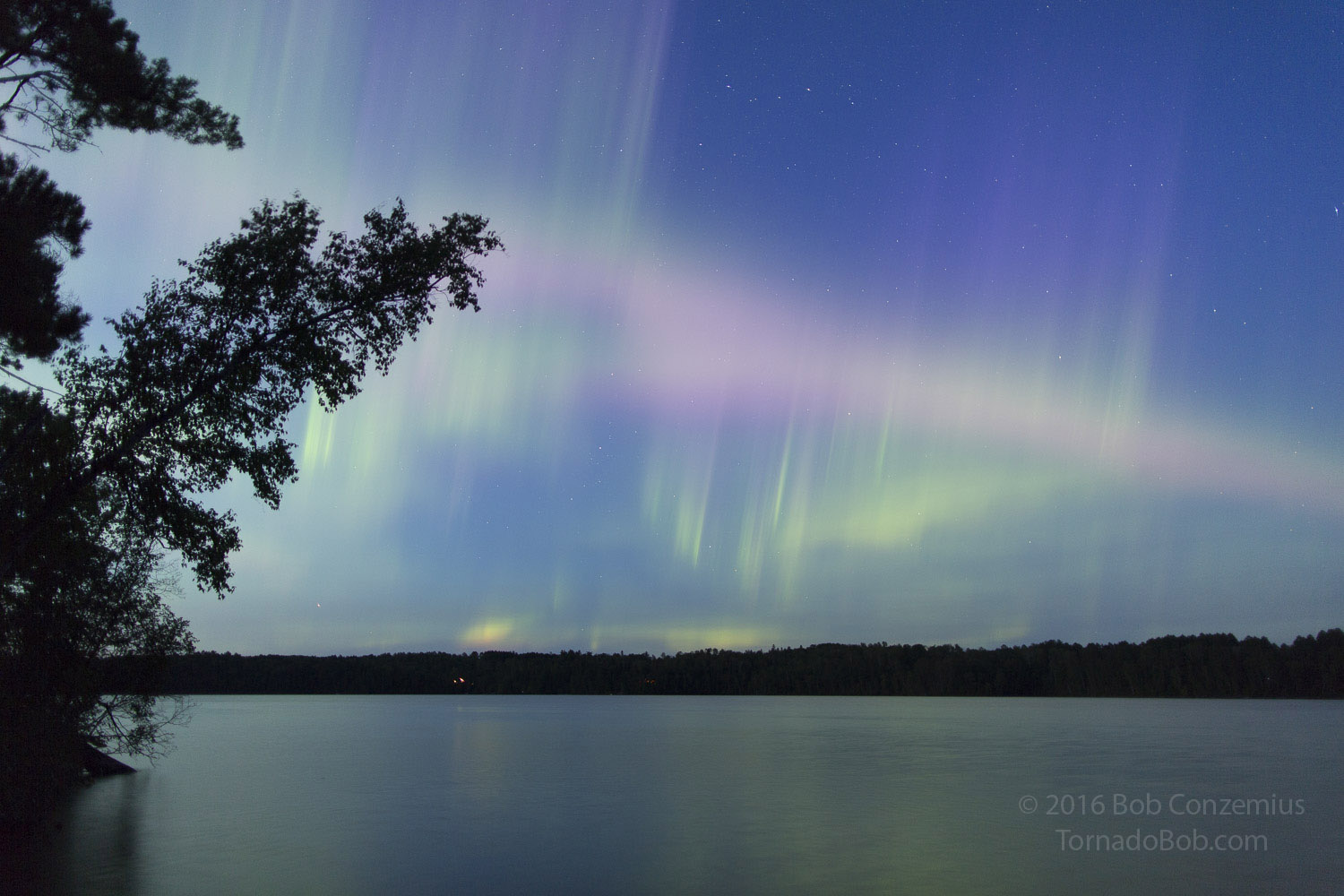 |
| Auroral columns begin to puncture the arc as twilight fades. |
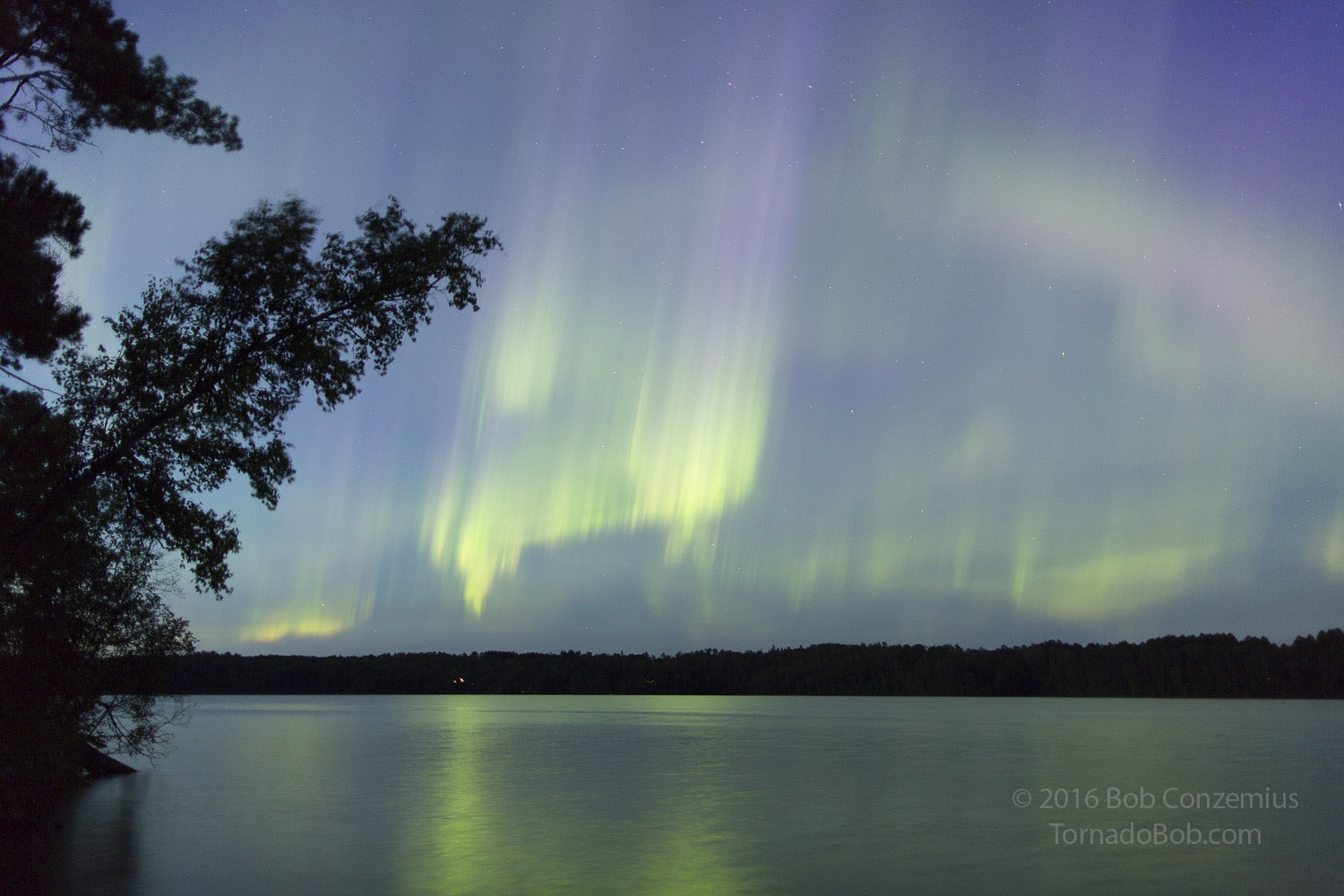 |
| The auroras really intensify and begin to fill more of the sky. |
As the show continued to intensify, I got a friendly text from someone who was also watching the show to remember to look south. Indeed, there was a narrow ribbon of auroras that had formed overhead and a little to the south. I switched to a fisheye lens on my time lapse camera and dashed back to the car to get a second camera.
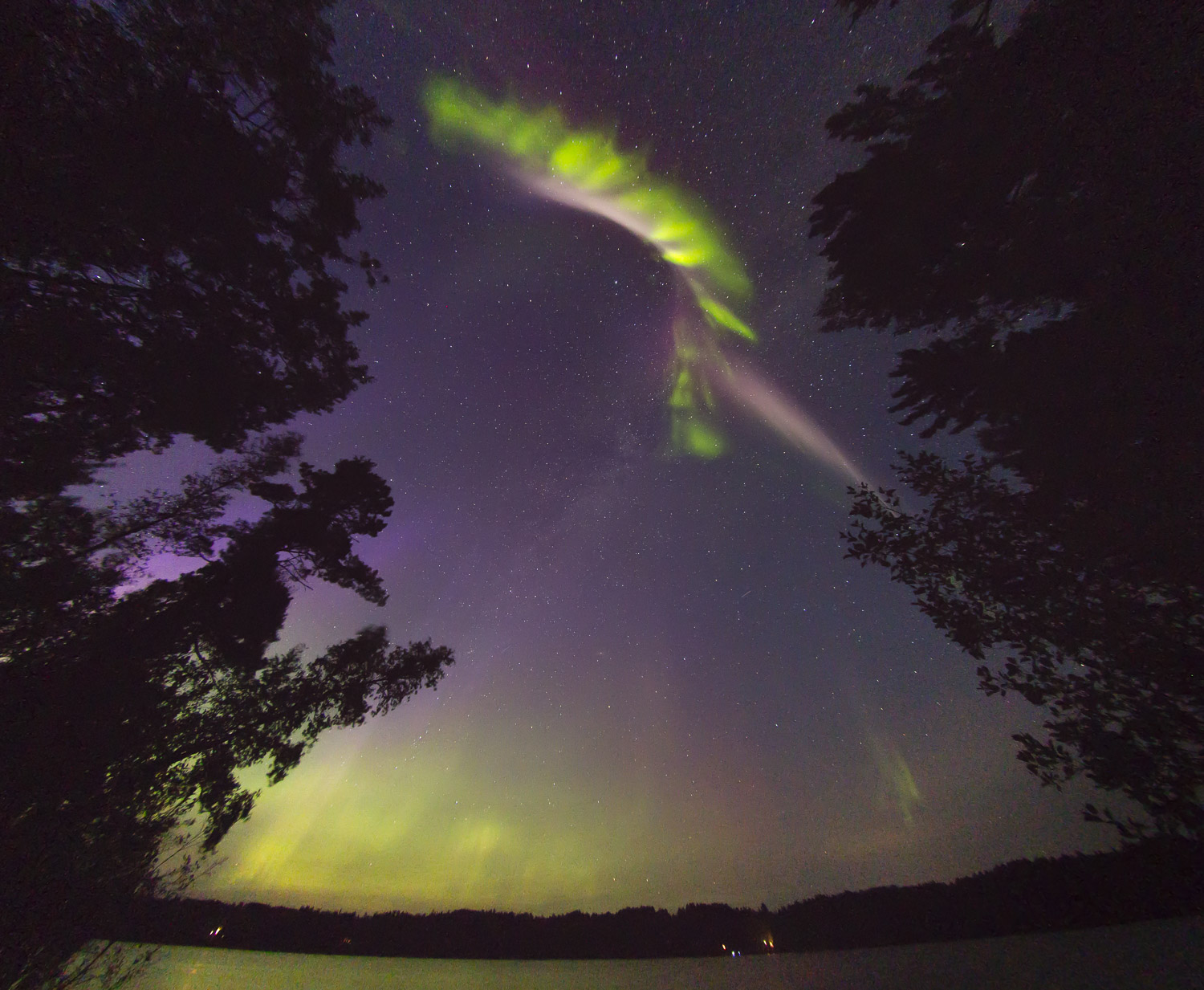 |
| I decided to switch to a fisheye lens. This is Adobe Camera Raw's "correction" to make it nearly rectilinear. |
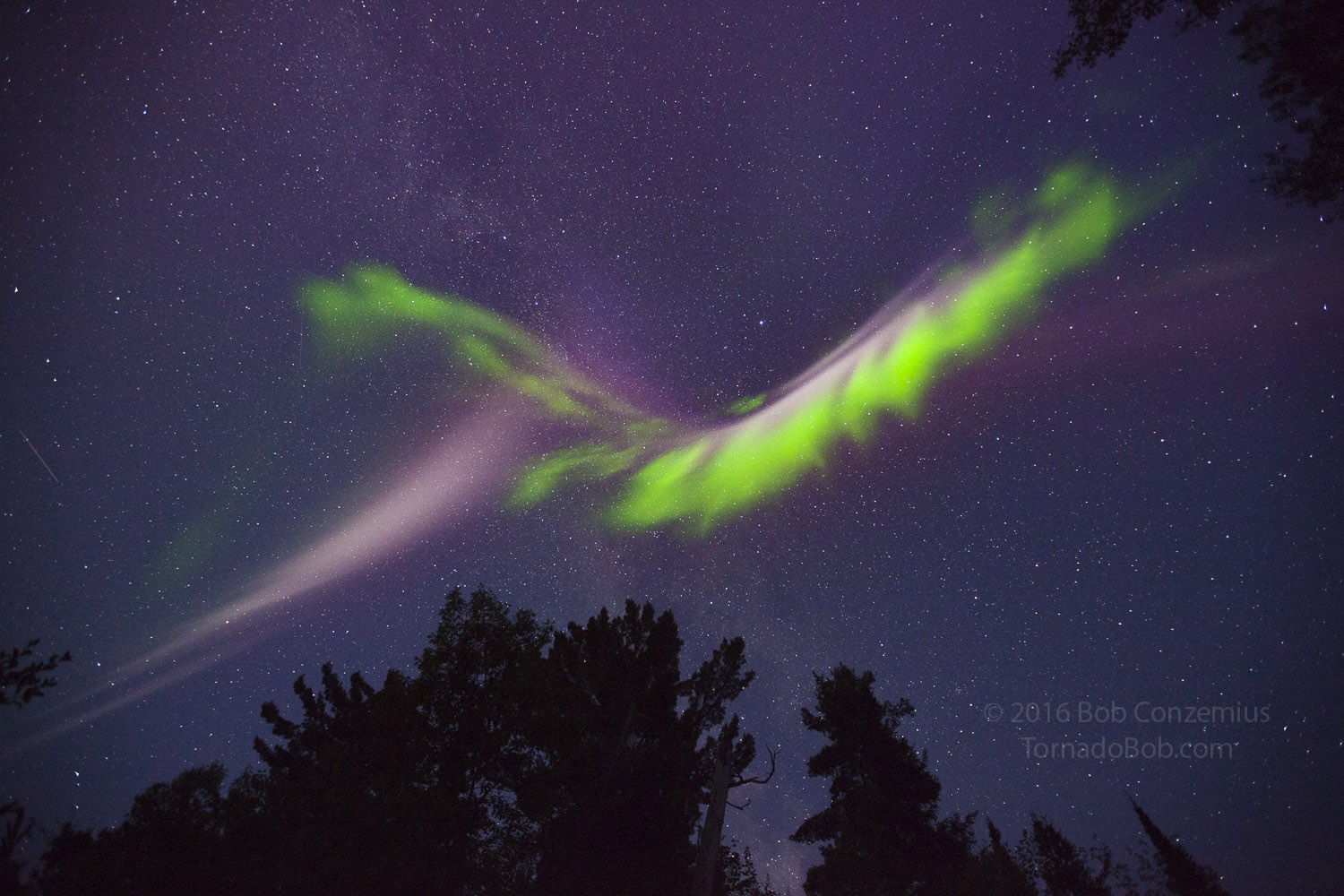 |
| With my other camera, I spent time photographing the display overhead. |
When this more southern display faded, I looked back north and saw that the auroras had faded rather quickly. It seemed a little odd that things had quieted down so quickly, but the sky was now mostly dark, partly due to the disappearance of twilight, but also due to the fading auroras. A few columns persisted to my southeast, but the show had mostly ended. I debated my next options and decided it was time to switch to a lake with a better northern view because the auroras had retreated to the horizon. By the time I left Caribou Lake, and auroral arc was re-forming across the northern horizon.
I arrived rather quickly at North Star Lake, which was not really far from my first shooting location. I set up and too pictures right away, expecting the auroras would develop and intensify into a substorm, but that never happened. They did come a bit closer from the northern horizon, but then they soon faded, even when Bz turned back south again. Normally, a second substorm would occur, but for some reason, that did not happen tonight. I shot for a bit longer then decided to head home.
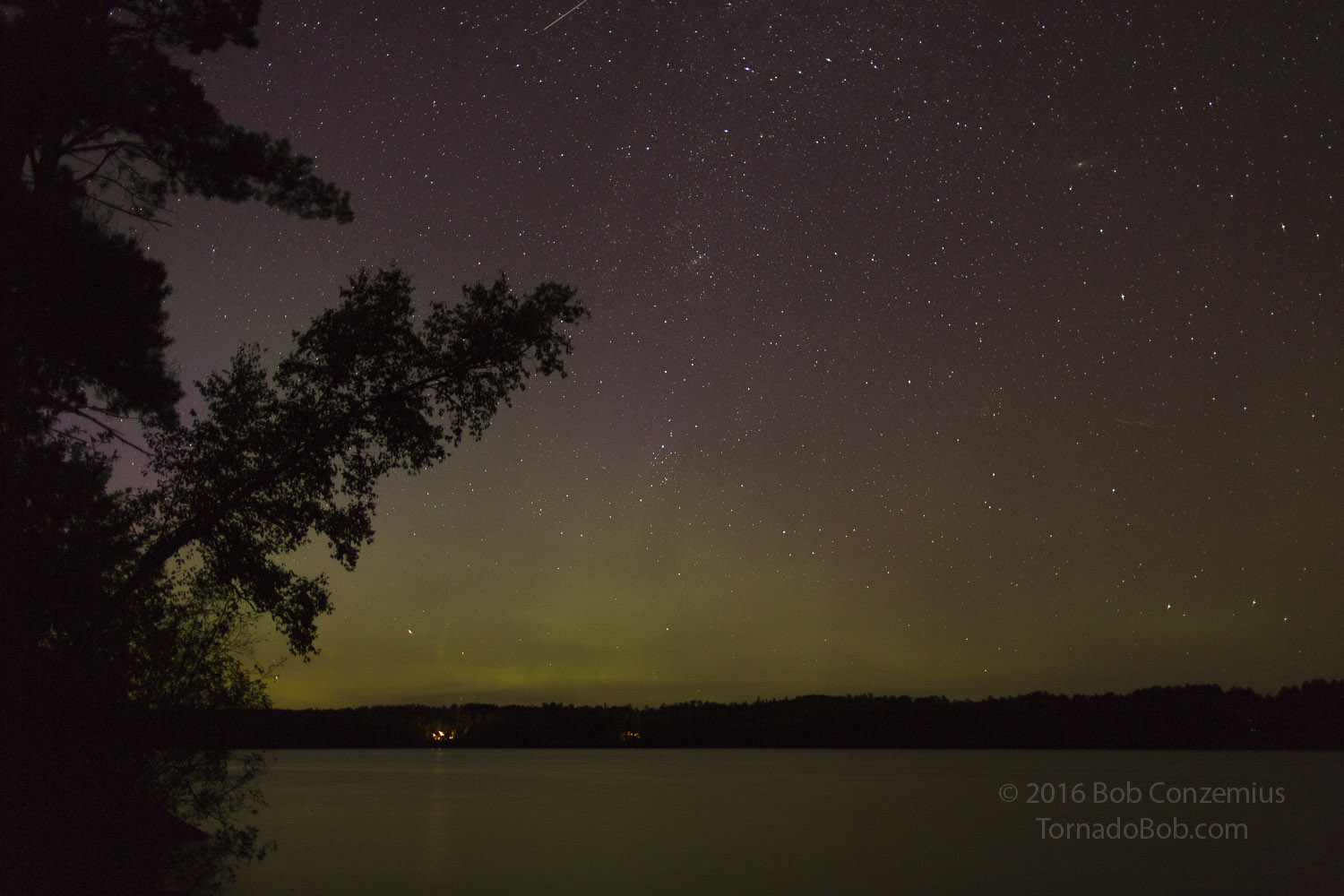 |
| Suddenly, I noticed the auroras had greatly dimmed. At least the twilight was gone, so I could have better contrast for the next round. |
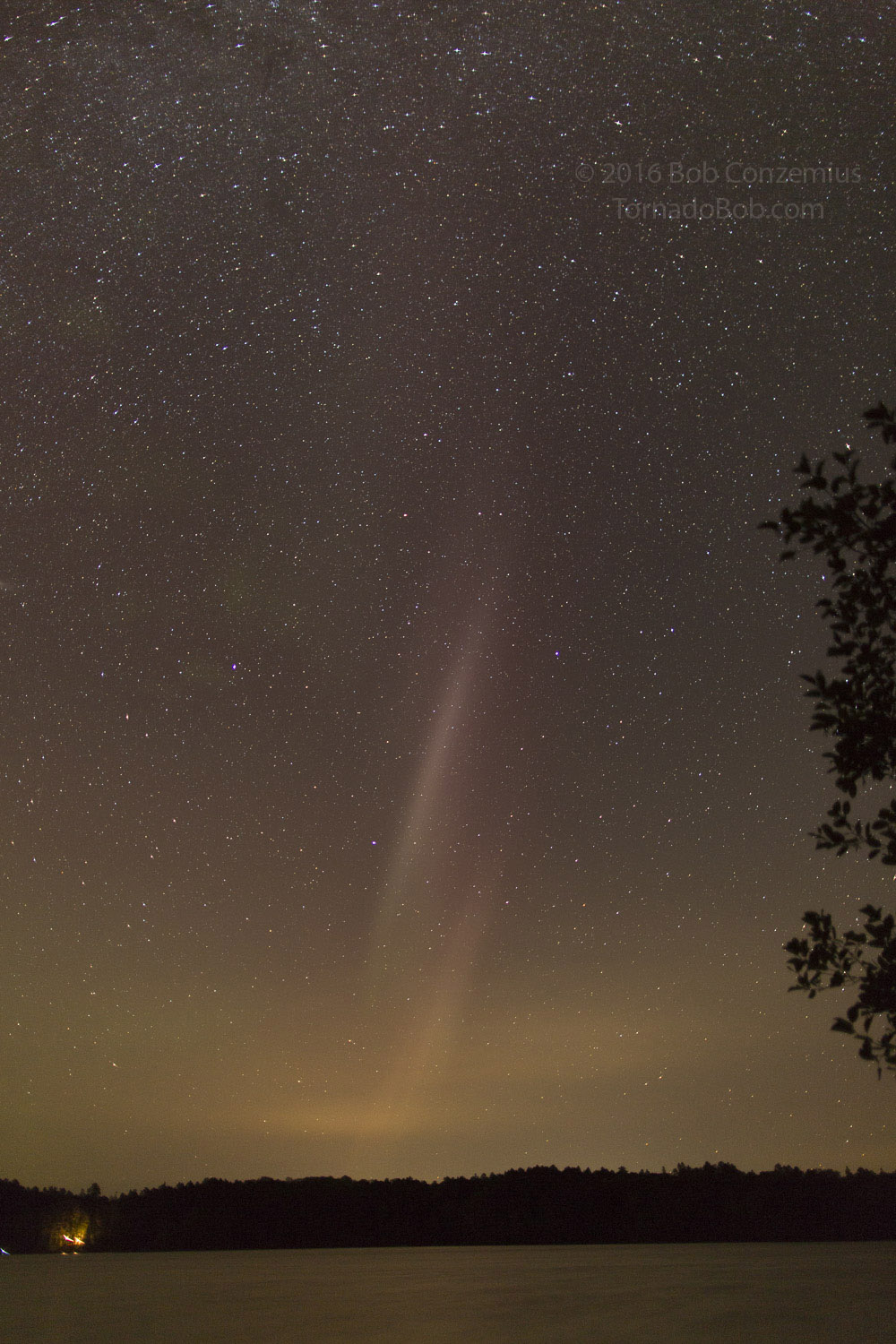 |
| A few columns persisted to my east-southeast. |
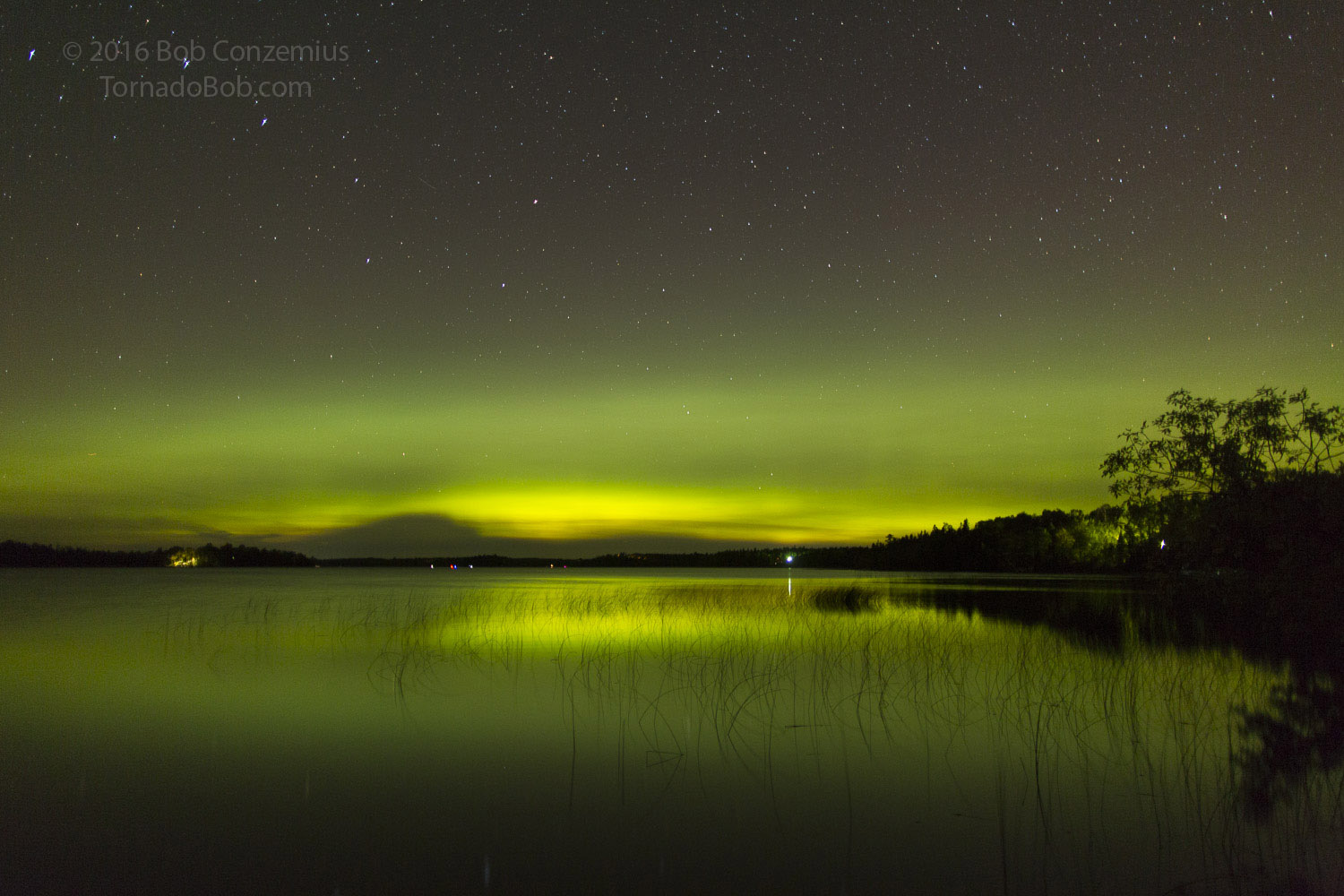 |
| A new lake and a rebuilding auroral arc. For some reason, this never reached the substorm phase and soon faded. |
Back to Auroras | Home